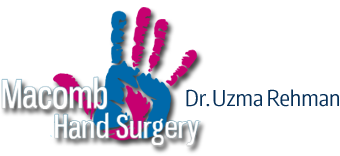Arm Doctor’s Top 12 Tips to Prevent Baseball Arm Injuries (Part 2)
In this three part article, top Detroit area arm doctor, Dr. Rehman provides twelve tips for preventing arm injuries in children and teen baseball players.
CLICK HERE for Part 1 of Arm Doctor’s Tips to Avoid Baseball Arm Injuries
6. To avoid arm injury, make sure your child is conditioning properly
The most common pitching injuries result from overuse, which is directly related to a lack of sufficient conditioning of certain arm muscles. All baseball players – but especially pitchers – need to incorporate conditioning and stretching exercises for the shoulder. While muscles in the front of the arm are naturally stronger, muscles in the back of the arm that are used to stop the pitching motion are less developed and therefore more prone to injury.
But a good conditioning program can emphasize building up those muscles. This should include preseason conditioning that is aimed at strengthening the core, the rotator cuff and the shoulder-stabilizing muscles (scapular stabilizers). Implementing this can go a long way toward preventing arm injury from throwing and pitching.
7. Arm doctors advise proper warms up and stretches
Any arm doctor, coach or physical therapist will tell you that cold muscles are more injury prone. ensure your child gets to practice or to their game with plenty of time to warm up.
This is particularly critical for young baseball players during a growth spurt – because the child’s muscles and tendons are even tighter than normal as they stretch to accommodate their growing body.
8. Arm doctors warn to never allow a child to play through pain
Young baseball pitchers pitching in pain are at a high likelihood of damaging their body. Watch for any persistent pain, as this could be an indicator of a either overuse or a traumatic injury. Arm doctors warn that any child or teen baseball player needs to be sidelined until the pain subsides.
While kids never want to disappoint their teammates, their coaches or their parents, it is essential to teach them not to play through pain. This is especially true for pitchers who should be instructed to never try and “push through” an inning if they are feeling soreness or tiredness in their pitching arm.
Help the athlete distinguish between normal stiffness or soreness from throwing (which does need to be “worked out” the next day) and actual pain that signals overuse, muscle strain, ligament strain, or another serious injury.
Arm doctors typically recommend that kids throw (not pitch) from four to six times weekly to build arm strength and prevent injury. This helps them with the necessary task of working through stiffness.
Just remember, while working out stiffness actually prevents injury – playing through pain increases the risk of arm injury.
9. Avoid use of radar guns to prevent baseball arm injury
A landmark study in 2006 found that pitchers throwing harder than 85 mph have a two-and-half times greater likelihood of suffering serious arm injury.
And a subsequent study by Mayo Clinic in 2012 found that the harder a pitcher throws, the greater the stress on the elbow, and the higher the risk of arm injury. Increased pitching speeds were particularly likely to lead to injury of the player’s ulnar collateral ligament.
Arm doctors agree that the use of radar guns is largely responsible for putting too much emphasis on throwing harder. As a result arm doctors are seeing young athletes hurting their elbows and their shoulders while trying to throw up to speeds of 90 mph.
The emphasis should be a teen and child athletes throwing and pitching to the best of their abilities – and not pressuring them to try to achieve unattainable speeds that can result in serious arm injury
CLICK HERE for More Tips to Avoid Baseball Arm Injuries
Top Detroit Area Hand & Arm Doctor
If you or your child are suffering from a baseball injury, or any pain in your fingers, wrist, elbow or arm, contact board certified Detroit area hand surgeon Doctor Rehman for a comprehensive evaluation and consultation. Your hands and arms are vitally important to everything you do. Rapid detection, diagnosis, and treatment is the most effective way to ensure you heal completely, and do not suffer long term consequences.
We offer the latest advancements and techniques in hand and arm physical therapy, and can put a treatment and injury-prevention plan in place for your family’s student athletes.

